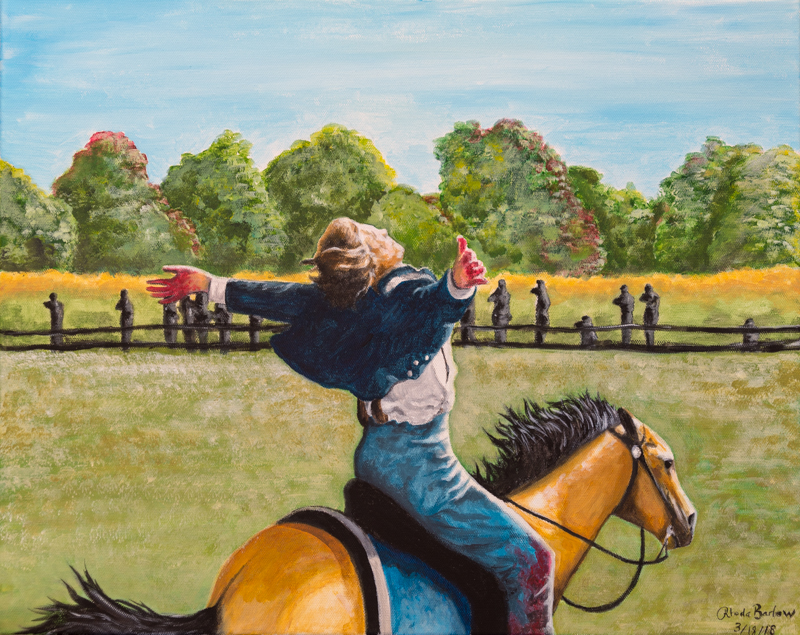As is the case with many people, I can act like a mean, unkind jerk and demonstrate many other anti-social behaviors as I attempt to navigate this life. Of course, it would be untruthful of me to not admit that I’m also capable of being very loving, kind and generous. I acknowledge that the seeds of every possible human behavior are within me, as they are within everyone. The trick is to surround myself with people who encourage the germination and nourishment of those behaviors that help to further the cause of a civilized, uplifting and advancing society. These same people, when allowed, can help me pull up and discard the weeds that grow from the seeds of uncivilized, demeaning and regressive behaviors.
Nine years ago my wife and I were introduced to an entire family of individuals who embody the very essence of people who have actively nourished the good seeds within themselves and who have done an amazing job of being aware of and discarding the seeds that grow weeds that choke a civilization. They have been an absolutely astonishing group of people and I am in awe of them. I look back on the meandering path I followed to finally be in a place where I could meet them and I am overcome with gratitude for that unplanned and often confusing path. I passed many flowers and many weeds along that path, all of which helped me on my way; and I am grateful for all of them.
This family that Lisa and I met have been a true inspiration and a respite from the chaos of life. Their intellect, insights, spirituality, talents, generosity, humor and many other great qualities are truly appreciated and welcomed.
I want to share just one experience I had with this family that demonstrates the love and generosity they embody.
There was a time, while visiting this family, that I had shared with them my understanding and feelings of a particular scene in the movie, “Dances With Wolves”. It happens at the start of the movie when John Dunbar awakens in a big tent that was being used as an army hospital, surrounded by the evidence of many amputations. It appeared that amputation was the preferred method of surgery.
Outside, the opposing armies were at a stalemate, neither side able to advance on their enemy.
Inside the hospital it appears that John Dunbar has decided that death would be preferred to losing one or more limbs. So he painfully pulls on his boots, grabs his coat and heads out to find a horse. His decision is to ride through the center of the field that separates the armies in hopes that the enemy will shoot him. Galloping down the center, he leans back on the horse and extends his arms to the side; letting go of everything in this world and inviting the deadly shot that would take him out of his misery.
What happens next was an unexpected surprise. As the men of the enemy army start focusing their attention and siting their rifles on this crazy man, John Dunbar’s fellow soldiers focus their attention on the opposing army and are able to overwhelm them.
His act of letting go of everything ended up making him a reluctant hero. He wasn’t hoping for that nor was he expecting it. The rest of the movie depicts a changed man who allows himself to know people of a different culture. He demonstrates a willingness to allow the seeds of goodness to grow within him and to discard the seeds that would destroy good people. He continues to pay the price, but he does so willingly and with a good conscience.
As I was explaining the personal significance this “letting go” scene in the movie had for me, one of the daughters of this family was apparently paying attention to what I was saying. As she listened, she determined to paint the scene for me. So for the next little while (weeks, months?), she painted. And while she painted, she fussed and fumed and worried about getting it right.
I had no idea she was doing this; she never mentioned it to me. But last night, at the urging of her Dad, she nervously presented it to me. She was concerned and unsure about whether I would like it or not.
She needn’t have worried.
It’s beautiful.
She captured the scene perfectly.
I was a bit overcome by not only the painting itself, but by the generosity and love she showed to me as her friend.
Thank you, Rhoda! I love the painting! And thank you for acknowledging, embracing and sharing the goodness within you; you’re a wonderful young lady and a beautiful person with amazing talents. This world is a better place because of you and your family! Thank you all for helping me germinate the good seeds.







One thought on “Letting Go”
I have recently been introduced to a term that goes even further than, “Letting Go”. Here’s a quote from Frank Ostaseski from his book, “The Five Invitations”:
Surrender is infinitely deeper than letting go. Letting go is still a strategy of the mind occupied with the past. It is an activity of the personality, and the personality is primarily concerned with perpetuating itself. Letting go is still me making a choice. Ego cannot surrender. Surrender is the effortless, easeful non-doing of our essential nature without interference. We are simply aware. Surrender is more like an initiation, in which the dispensable is sacrificed to the essential. While we may resist, our fighting ultimately proves ineffective.
Ostaseski, Frank. The Five Invitations (p. 276). Flatiron Books. Kindle Edition.